MENA
MENA is an English-language acronym referring to the Middle East and North Africa, which corresponds to the Greater Middle East. It is alternatively called the WANA (West Asia and North Africa), as well as the MENAP, which also includes Central Asia and the South Asian countries of Afghanistan and Pakistan. The MENAP covers an extensive region stretching from the Maghreb in the west to Pakistan in the east. The MENA acronym is often used in academia, military planning, disaster relief, media planning as a broadcast region, and business writing.[1][2] Moreover, the region shares a number of cultural, economic and environmental similarities across the countries; for example, some of the most extreme impacts of climate change will be felt in the region.
.svg.png)
List of countries
MENA has no standardized definition; different organizations define the region as consisting of different territories.
List of countries and territories most commonly constitute MENA.[1][3][4][5]
Additional countries and territories that are sometimes counted as part of MENA:








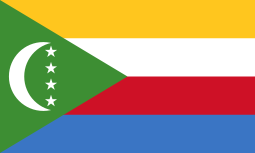


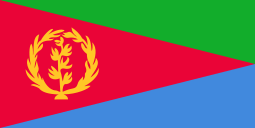

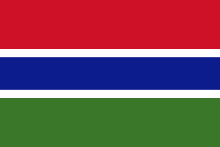


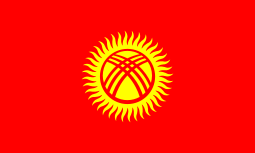









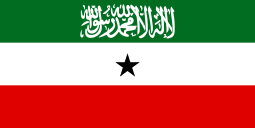
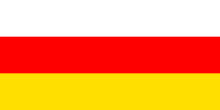
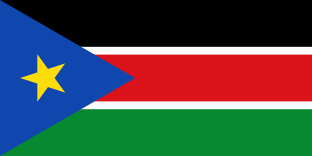


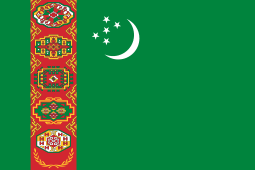

*Non-sovereign territories.
Economy and education
The MENA region has vast reserves of petroleum and natural gas that make it a vital source of global economic stability. According to the Oil and Gas Journal (January 1, 2009), the MENA region has 60% of the world's oil reserves (810.98 billion barrels (128.936 km3)) and 45% of the world's natural gas reserves ( 2,868,886 billion cubic feet (81,237.8 km3) ).[6]
As of 2011, 8 of the 15 OPEC nations are within the MENA region.
According to Pew Research Center, 40% of the adult population in MENA has completed less than a year of primary school. The fraction is higher for women, of whom half have been to school for less than a year.[7]
Religion
Islam is by far the dominant religion in nearly all of the MENA territories; 91.2% of the population is Muslim. The Middle East-North Africa region comprises 20 countries and territories with an estimated Muslim population of 315 million or about 23% of the world's Muslim population.[8] The term "MENA" is often defined in part in relation to majority Muslim countries that based on the countries located in the region, although several nations in the region are not majority Muslim-dominated.[9]
Demographics
The Demographics of the Middle East and North Africa (MENA) region show a highly populated, culturally diverse region spanning three continents. As of 2018, the population was nearly 578 million. The class, cultural, ethnic, governmental, linguistic and religious make-up of the region is highly variable.
Debates on which countries should be included in the Middle East are wide-ranging.[10] The Greater Middle East and North Africa region can include the Caucasus, Cyprus, Afghanistan, and several sub-Saharan African states due to various social, religious and historic ties. The most commonly accepted countries in the MENA region are included on this page.Climate change
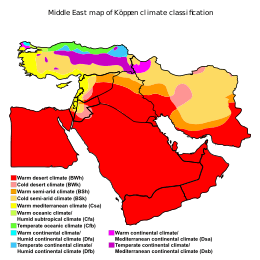
Climate change in the Middle East and North Africa (MENA) refers to changes in the climate of the MENA region and the subsequent response, adaption and mitigation strategies of countries in the region. In 2018, the MENA region emitted 3.2 billion tonnes of carbon dioxide and produced 8.7% of global greenhouse gas emissions (GHG)[11] despite making up only 6% of the global population.[12] These emissions are mostly from the energy sector,[13] an integral component of many Middle Eastern and North African economies due to the extensive oil and natural gas reserves that are found within the region.[14][15]
Recognised by the United Nations, The World Bank and the World Health Organisation as one of the greatest global challenges in the 21st century, climate change is currently having an unprecedented effect upon the Earth's natural systems.[16][17][18] Sharp global temperature and sea level changes, shifting precipitation patterns and increased frequency of extreme weather events are some of the main impacts of climate change as identified by the Intergovernmental Panel on Climate Change (IPCC).[19] The MENA region is especially vulnerable to such impacts due to its arid and semi-arid environment, facing climatic challenges such as low rainfall, high temperatures and dry soil.[19][20] The climatic conditions that foster such challenges for MENA are projected by the IPCC to worsen throughout the 21st century.[19] If greenhouse gas emissions are not significantly reduced, part of the MENA region risks becoming uninhabitable before the year 2100.[21][22][23]
Climate change is expected to put significant strain on already scarce water and agricultural resources within the MENA region, threatening the national security and political stability of all included countries.[24] This has prompted some MENA countries to engage with the issue of climate change on an international level through environmental accords such as the Paris Agreement. Policy is also being established on a national level amongst MENA countries, with a focus on the development of renewable energies.[25]Instability in the region
Due to rich resources, mainly oil and gas, combined with its location between three continents, (Asia, Africa and Europe), the MENA region has been in conflict since the collapse of the Ottoman Empire; notably due to the creation of Israel, a Jewish state among Arab and Muslim countries; Israeli–Palestinian conflict; the Iran–Iraq War; Iran–Saudi Arabia proxy conflict; and the rise of terrorism. Conflict in the region had come to its highest peak so far in the 21st century, with incidents such as the U.S. intervention of Iraq in 2003 and subsequent Iraq War and the rise of ISIS; the Arab Spring, which spread war to throughout the region such as the Syrian Civil War, Libyan Civil War and Yemeni Civil War.
Controversy over term
Due to the geographic ambiguity and Eurocentric nature of the term "Middle East", some people prefer use other terms like WANA (West Asia and North Africa)[26] or the less common NAWA (North Africa-West Asia).[27] MENA region remains the most common term and is used by most organizations, academia, and political entities flexibly, including those in the region itself.
Other terms
- MENAP
From April 2013, the International Monetary Fund started using a new analytical region called MENAP (Middle East, North Africa, Afghanistan, and Pakistan), which adds Afghanistan and Pakistan to MENA countries.[28] Now MENAP is a prominent economic grouping in IMF reports.[29][30]
- MENAT
The term MENAT (Middle East, North Africa, and Turkey) has been used to include Turkey in the list of MENA countries.[31][32]
See also
| Look up MENA in Wiktionary, the free dictionary. |
References
- "World Bank Definition: MENA". Worldbank.org. Archived from the original on 29 October 2014. Retrieved 28 November 2014.
- "World Economic Forum on the Middle East and North Africa, Marrakech, Morocco, 26-28 October 2010". World Economic Forum on the Middle East and North Africa 2010 - World Economic Forum. Archived from the original on 10 April 2012. Retrieved 28 November 2014.
- Dumper, Michael, and Stanley, Bruce E., Cities of the Middle East and North Africa: A Historical Encyclopaedia, 2007
- George T. Abed, Hamid Reza Davoodi (2003). Challenges of Growth and Globalization in the Middle East and North Africa. International Monetary Fund. p. 2. Retrieved 10 February 2018.CS1 maint: uses authors parameter (link)
- "Cluster Munitions in the Middle East and North Africa" (PDF). Human Rights Watch. Retrieved 25 April 2018.
- "International Reserves". United States Department of Energy. Archived from the original on 13 May 2011. Retrieved 13 May 2011.
- Masci, David (11 January 2017). "About one-fifth of adults globally have no formal schooling". Pew Research Center. Retrieved 24 January 2019.
- "Middle East-North Africa Overview". Pew Forum. 7 October 2009. Archived from the original on 28 January 2017.
- "Politics and Islam in Central Asia and MENA". 24 April 2012. Archived from the original on 6 February 2017.
- Keddie, Nicki (1973). "Is There a Middle East". International Journal of Middle East Studies. 4 (3): 255–271. doi:10.1017/S0020743800031457 – via JSTOR.
- "CO2 Emissions | Global Carbon Atlas". www.globalcarbonatlas.org. Retrieved 10 April 2020.
- "Population, total - Middle East & North Africa, World | Data". data.worldbank.org. Retrieved 11 April 2020.
- Abbass, Rana Alaa; Kumar, Prashant; El-Gendy, Ahmed (February 2018). "An overview of monitoring and reduction strategies for health and climate change related emissions in the Middle East and North Africa region". Atmospheric Environment. 175: 33–43. doi:10.1016/j.atmosenv.2017.11.061. ISSN 1352-2310.
- Al-mulali, Usama (1 October 2011). "Oil consumption, CO2 emission and economic growth in MENA countries". Energy. 36 (10): 6165–6171. doi:10.1016/j.energy.2011.07.048. ISSN 0360-5442.
- Tagliapietra, Simone (1 November 2019). "The impact of the global energy transition on MENA oil and gas producers". Energy Strategy Reviews. 26: 100397. doi:10.1016/j.esr.2019.100397. ISSN 2211-467X.
- Bhargava, Viy K., ed. (28 August 2006). Global Issues for Global Citizens. The World Bank. ISBN 978-0-8213-6731-5.
- "Ten health issues WHO will tackle this year". www.who.int. Retrieved 12 April 2020.
- Nations, United. "The Greatest Threat To Global Security: Climate Change Is Not Merely An Environmental Problem". United Nations. Retrieved 12 April 2020.
- IPCC, 2014: Climate Change 2014: Synthesis Report. Contribution of Working Groups I, II and III to the Fifth Assessment Report of the Intergovernmental Panel on Climate Change [Core Writing Team, R.K. Pachauri and L.A. Meyer (eds.)]. IPCC, Geneva, Switzerland, 151 pp.
- El-Fadel, M.; Bou-Zeid, E. "Climate change and water resources in the Middle East: vulnerability, socio-economic impacts and adaptation". Climate Change in the Mediterranean. doi:10.4337/9781781950258.00015. hdl:10535/6396.
- Broom, Douglas. "How the Middle East is suffering on the front lines of climate change". World Economic Forum. Retrieved 4 February 2020.
- Gornall, Jonathan (24 April 2019). "With climate change, life in the Gulf could become impossible". Euroactive. Retrieved 4 February 2020.
- Pal, Jeremy S.; Eltahir, Elfatih A. B. (26 October 2015). "Future temperature in southwest Asia projected to exceed a threshold for human adaptability". Nature Climate Change. 6 (2): 197–200. doi:10.1038/nclimate2833. ISSN 1758-678X.
- Waha, Katharina; Krummenauer, Linda; Adams, Sophie; Aich, Valentin; Baarsch, Florent; Coumou, Dim; Fader, Marianela; Hoff, Holger; Jobbins, Guy; Marcus, Rachel; Mengel, Matthias (12 April 2017). "Climate change impacts in the Middle East and Northern Africa (MENA) region and their implications for vulnerable population groups". Regional Environmental Change. 17 (6): 1623–1638. doi:10.1007/s10113-017-1144-2. ISSN 1436-3798.
- Brauch, Hans Günter (2012), "Policy Responses to Climate Change in the Mediterranean and MENA Region during the Anthropocene", Hexagon Series on Human and Environmental Security and Peace, Springer Berlin Heidelberg, pp. 719–794, ISBN 978-3-642-28625-4, retrieved 6 April 2020
- "West Asia and North Africa: A Regional Vision". Worldbank.org. Archived from the original on 27 October 2014. Retrieved 28 November 2014.
- "Welcome". Agu.org. Archived from the original on 30 April 2005. Retrieved 28 November 2014.
- "World Economic Outlook Database". Imf.org. Archived from the original on 23 October 2014. Retrieved 28 November 2014.
- "World Economic Outlook Database" (PDF). Archived (PDF) from the original on 21 April 2016. Retrieved 23 April 2016.
- "MENAP" (PDF). Archived (PDF) from the original on 19 August 2014. Retrieved 3 October 2016.
- "MENAT Regional Council". Syracuse University Dubai. Archived from the original on 18 August 2016. Retrieved 14 June 2016.
- "About GE in the Middle East, North Africa and Turkey (MENAT)". General Electric. Archived from the original on 4 August 2016. Retrieved 14 June 2016.